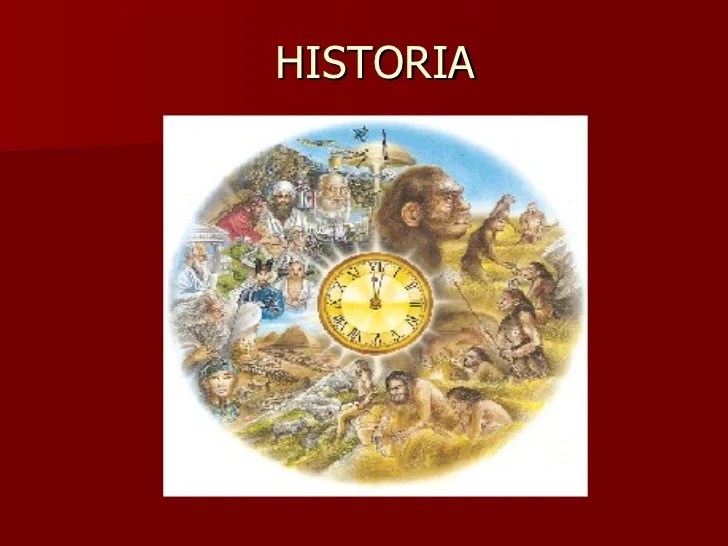The initial setting of a story holds immense importance, as it sets the stage for the narrative that unfolds. In the captivating world of “parte inicial de la historia,” the setting plays a pivotal role in shaping the characters, their motivations, and the conflicts that drive the plot forward.
The story’s environment is meticulously crafted, immersing readers in a vivid tapestry of physical and social landscapes. From the time of day to the prevailing weather conditions, every detail is carefully considered to create a tangible and believable world.
Initial Setting

The story unfolds in the quaint, coastal town of Havenwood, nestled amidst rolling hills and the shimmering expanse of the Azure Sea. As the sun casts its golden rays, painting the sky in hues of orange and pink, a gentle breeze whispers through the lush foliage that lines the cobblestone streets.
Havenwood is a tapestry woven with history and tradition. Its narrow, winding alleys echo with tales of seafaring adventures and whispered secrets. The town square bustles with activity, as locals gather at the market stalls, their voices creating a vibrant hum that fills the air.
Social and Cultural Context
Havenwood is a melting pot of cultures, where the descendants of ancient mariners mingle with newcomers seeking a life by the sea. The town’s social fabric is tightly knit, with a strong sense of community and shared values. Respect for tradition and a love of the sea run deep within the hearts of its inhabitants.
Introducing the Characters

The central figures of our story are a diverse group of individuals, each with their unique backgrounds, motivations, and relationships that intertwine to drive the plot forward. Their distinct personalities and experiences shape their actions and interactions, adding depth and complexity to the narrative.
Protagonist: Anya Petrova, Parte inicial de la historia
Anya is a young woman with a keen intellect and a compassionate heart. Her sharp mind and determination make her a formidable force, while her empathy and kindness draw others to her. Growing up in a humble village, she has witnessed firsthand the struggles of the common folk, fueling her passion for justice and equality.
Love Interest: Dimitri Volkov
Dimitri is a enigmatic and skilled swordsman with a mysterious past. His piercing gaze and quiet demeanor conceal a fierce loyalty and a deep sense of honor. Haunted by a traumatic event in his youth, he seeks redemption and a purpose worthy of his abilities.
Antagonist: Count Vladamir Rostov
Count Rostov is a ruthless and ambitious nobleman who rules with an iron fist. His wealth and influence have corrupted his soul, driving him to seek absolute power at any cost. Driven by greed and a lust for control, he poses a grave threat to the realm.
Mentor: Old Man Gregor
Gregor is a wise and enigmatic hermit who lives in the secluded mountains. Once a renowned scholar, he has retreated from society to pursue knowledge and spiritual enlightenment. His profound wisdom and guidance become invaluable to Anya as she embarks on her perilous journey.
Inciting Incident
The inciting incident is the event or situation that triggers the main conflict or plot of the story. It is the moment when the protagonist’s life is thrown into disarray and they are forced to confront their challenges and obstacles.
The inciting incident can take many forms, but it is always a significant event that has a profound impact on the characters and the story. It can be a natural disaster, a crime, a betrayal, or even a simple misunderstanding.
Consequences and Implications
The inciting incident has a number of consequences and implications for the characters and the story. First, it sets the protagonist on a journey of self-discovery and growth. They must learn to overcome their challenges and obstacles, and they must come to terms with their own strengths and weaknesses.
Second, the inciting incident creates conflict and tension. The protagonist must face their fears and make difficult choices. They must decide who they can trust and who they cannot. The conflict and tension will drive the story forward and keep the reader engaged.
Finally, the inciting incident can have a lasting impact on the characters and the story. It can shape their relationships, their beliefs, and their destiny. The inciting incident is the catalyst that sets the story in motion, and it is the event that will ultimately determine the outcome.
Rising Action
The rising action in a story encompasses the series of events that gradually escalate the conflict and build tension, leading towards the climax. As the characters confront challenges and obstacles, their actions and decisions propel the plot forward and heighten the stakes.
The rising action typically involves the introduction of new obstacles or complications that test the characters’ abilities and resolve. These challenges may stem from external forces, such as antagonistic characters or environmental hazards, or from internal conflicts within the characters themselves.
The opening of the story introduces us to the main characters and their relationships. The conflict in the scarlet ibis is introduced as the narrator’s brother, Doodle, is born with a disability. The narrator’s initial reaction to his brother is one of disappointment and embarrassment, setting the stage for the internal conflict that will drive the story.
Character’s Actions and Decisions
The characters’ actions and decisions play a crucial role in the rising action. Their choices and responses to challenges can either exacerbate the conflict or provide opportunities for resolution. As the characters make decisions, they often face unforeseen consequences that further complicate the situation.
- Positive Decisions:Characters may make wise choices that lead to positive outcomes, providing hope or temporary relief.
- Negative Decisions:Characters may also make poor decisions that lead to negative consequences, escalating the conflict and increasing the stakes.
Climax: Parte Inicial De La Historia

The climax of the story arrives as the conflict between the protagonist and antagonist reaches its boiling point. It is the turning point where the story’s tension and suspense peak, and the characters’ choices have far-reaching consequences.
In this intense moment, the protagonist faces a crucial decision that will shape the outcome of the story. The choice they make is often a reflection of their values, beliefs, and inner struggles. The consequences of their actions reverberate throughout the narrative, influencing the lives of both themselves and those around them.
Emotional Impact and Significance
The climax is a pivotal moment in the story, leaving a lasting emotional impact on the reader. It evokes a range of emotions, from exhilaration to heartbreak, and creates a sense of catharsis as the conflict is resolved or takes an unexpected turn.
The climax also serves as a significant turning point in the character’s journey. It tests their resilience, forces them to confront their flaws, and ultimately shapes their destiny. Through the climax, the story reaches its highest point of intensity, leaving the reader on the edge of their seat and eager to discover the outcome.
Falling Action

The falling action is the part of the story that follows the climax and leads to the resolution. It shows how the characters deal with the aftermath of the conflict and how the story’s events have changed them. The falling action provides closure and prepares the reader for the resolution.
Characters’ Reactions
In the falling action, the characters may experience a range of emotions, including relief, sadness, anger, and confusion. They may struggle to come to terms with what has happened and to find a way to move forward. The falling action shows how the characters grow and change as they deal with the consequences of their actions.
Resolution
The falling action leads to the resolution of the story. The resolution is the final outcome of the conflict and the point at which the story ends. The resolution may be happy, sad, or bittersweet. It may leave the reader with a sense of closure or it may leave them with questions.
Resolution
In the story’s climax, the protagonist and antagonist faced off in a decisive battle. The protagonist, driven by determination and a newfound sense of purpose, emerged victorious, resolving the conflict that had been brewing throughout the narrative.
As a result of the conflict, the characters underwent significant growth and transformation. The protagonist, who had initially been timid and uncertain, gained confidence and strength. The antagonist, who had been driven by selfish ambition, realized the error of their ways and found redemption.
Themes and Messages
The resolution of the story conveys several important themes and messages. One theme is the importance of perseverance and resilience in the face of adversity. The protagonist’s victory is a testament to the power of determination and the ability to overcome challenges.
Another theme is the transformative power of conflict. The conflict between the protagonist and antagonist forced both characters to confront their own weaknesses and ultimately grow and change.
Finally, the resolution also emphasizes the importance of redemption and forgiveness. The antagonist’s realization of their wrongdoing and their subsequent redemption show that it is never too late for change.
Answers to Common Questions
What is the significance of the initial setting in “parte inicial de la historia”?
The initial setting establishes the physical and social environment of the story, providing context for the characters and their actions. It sets the stage for the conflicts that drive the plot and creates a tangible world for readers to immerse themselves in.
How does the setting influence the characters in “parte inicial de la historia”?
The setting shapes the characters’ motivations, backgrounds, and experiences. It influences their decisions and actions, creating a dynamic interplay between the characters and their environment.
What are some examples of effective initial settings in literature?
Classic examples include the eerie moor in “Wuthering Heights,” the bustling streets of Victorian London in “Oliver Twist,” and the desolate wasteland in “The Road.” These settings not only provide a backdrop but also contribute to the overall atmosphere and themes of the stories.